Shocking News From John Canzano
Welcome to Ute Hub › Forums › Utah Utes Sports › Football › Shocking News From John Canzano
- This topic has 21 replies, 13 voices, and was last updated 1 year, 6 months ago by
 pics.
pics.
-
AuthorPosts
-
-
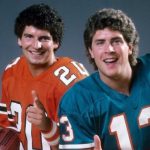 The Miami UteParticipant
The Miami UteParticipantAccording to John Canzano, it was Taylor Randall who was the catalyst in convincing the other PAC school presidents to turn down ESPN’s $30M per year offer and ask for $50M. As we all know, ESPN essentially stopped all negotiations with the PAC after that counteroffer leading to a series of events which eventually led to the PAC’s implosion. If true, and I have no reason to doubt it based on the sourcing of the article, all I can say is wow. I’ve attached the article below in case anyone wants to read it and since it’s behind a paywall.
The Pac-12 Conference received an offer of $30 million per school for its media rights last fall. ESPN wanted to end the negotiation early and without competition. Last October, the network slid what it thought was a reasonable offer across the table.
The Pac-12 presidents and chancellors couldn’t wait to see it. After all, months earlier they’d watched their Big Ten counterparts announce a deal that would potentially distribute as much as $70 million or $80 million or even $100 million per school annually.
“Nobody was up for $30 million,” one Pac-12 president later told me.
The world would eventually find out that the Big Ten figures were inflated by those initial news reports. The actual budgeted media-rights distribution disclosed by UCLA last December during the UC Regents meetings was $62.5 million per year. It will grow to $65 million in year two with another jump in year three.
“There was a crash once we got the real number,” the president said, “once Kevin Warren left the Big Ten we found out the number wasn’t real.”
ESPN walked away from the negotiating table after the Pac-12 extended a counteroffer of $50 million per school last fall. The offer was presented to the network by commissioner George Kliavkoff and Sports Media Advisors, the consulting firm operated by Doug Perlman.
The $50 million counteroffer, some sources say, was shaped heavily by input from one particular university president — a Pac-12 board member who others say consulted with a campus professor to come up with the valuation.
Is that accurate?
If so, who is that president? And how did he/she arrive at $50 million per school?
It’s been the subject of a lot of discussion. I confirmed the identity of that president this week and reached him on the phone. He agreed to provide a written statement.
There were a line of mistakes made by the Pac-12 Conference. Too many to count. The purpose of this piece isn’t to dredge up the past, point fingers and blame any single individual for the downfall of the 108-year-old conference. Rather, there’s an in-depth study to be done and much to be learned from strategic miscues and failures of leadership.
That president was Taylor Randall, from the University of Utah.
This is his side of the story.
Pac-12 misplayed the ESPN counteroffer
The Pac-12 football season is in Week 6. The conference has six teams ranked in the Top 25. Most of the schools are focused on the business of their fiscal year and 10 schools are busy closing the loop on Pac-12 membership.Oregon, Washington, USC and UCLA — all headed to the Big Ten in 2024 — unveiled their future conference schedules this week on social media. But there were mixed feelings in other corners of the conference.
Tradition has been trampled. Rivalries are being blown up. The collateral damage is difficult to ignore. Oregon State and Washington State, two ranked teams without a conference to call home after this season, are faced with asking their state legislatures for financial assistance. The Beavers and Cougars continue to pursue clarity and control of assets. They’ve filed lawsuits against the conference and Commissioner George Kliavkoff.
What caused the ESPN negotiation to go sideways last fall?
Why did the Pac-12 counteroffer so boldly?
Utah president Taylor Randall offered a statement on that front:
“The Pac-12 Presidents and Chancellors worked collectively in pursuit of a new media rights agreement. Though an offer was made by one of our media partners, we elected to take the rights to market to get the best deal. Throughout the process, many of the CEOs — including myself — pushed to ensure that the conference was aggressive to secure the very best agreement we could. Several conference schools retained their own consultants to value the league, which resulted in a range of estimations. It is my understanding that any mention of $50 million, which was higher than any valuation, was only as a potential starting point in negotiations to help get us to the estimated true value.”
Randall provides the framework for the next part of our discussion. The presidents and chancellors wanted to “take the rights to market.” They weren’t interested in cutting an early deal, perhaps because at the time they weren’t yet worried that the worst-case scenario was a total implosion of the conference.
It now looks like a misfire.
There were a number of pivotal moments that led the conference down the dismal path to destruction. Correcting any one of the errors might have saved the Pac-12. Those failures eventually became apparent. But Taylor’s account doesn’t position him as a lone voice in the room, pushing for $50 million per school by himself, but rather as one of “many of the CEOs” who were trying to negotiate the best deal.
One Pac-12 president told me Kliavkoff and Sports Media Advisors completely misplayed the $50 million counteroffer: “The instructions were to negotiate. This wasn’t supposed to be a ‘take your ball and go home’ scenario.”
Multiple presidents and chancellors told me that Kliavkoff closed the negotiation circle so tightly that it was difficult to get accurate information. The “deal team” was comprised of the commissioner, his consultant, and few others. The Pac-12 presidents relied heavily on Kliavkoff’s chronically upbeat updates, which explains why so many campus leaders parroted the same “everything is great… we’re all united” rhetoric while it clearly was not behind closed doors.
They believed things were great.
So they were united.
Until they weren’t.
UCLA (and Oregon) impacted thinking
Washington State’s Kirk Schulz had more experience than any of the other Pac-12 board members as it relates to college athletics. Arizona State’s Michael Crow had been around longer than others. But Utah’s Taylor Randall, who has a rich background in economics, emerged as a strong voice in the room during months of Pac-12 CEO Group meetings.Randall had a doctorate in business, worked for years as a well-regarded professor, ran the university’s business school and previously served as a consultant for companies such as General Motors and DuPont.
He knew sound business when he saw it.
In fact, a member of Kliavkoff’s executive team told me that at one point Randall inquired if he could participate in the actual media-rights negotiations. He wanted to be an observer. It wasn’t a terrible idea. The presidents would have had a set of eyes and ears in the negotiating room. But the request was shot down by Kliavkoff and the consulting firm. Randall did not comment.
What the president and chancellors did do, however, was attempt to double check the work that Kliavkoff and his consulting firm were doing. It’s why a number of them hired their own consultants, Utah included. And almost everyone, at least initially, was operating from the Big Ten’s inflated valuations.
Bob Thompson, the retired Fox Sports Networks president, told me in the summer of 2022 that he believed the 10 remaining Pac-12 schools were worth $300 million total per year. That matches the $30 million per school that ESPN offered. But the valuations that the Pac-12 members came up with and talked about in their board meetings consistently came in between $40 million and $45 million per school annually.
Also, there was a complicating factor — the Pac-12 wanted UCLA back. The Bruins were expecting a $10 million per year increase in annual travel costs in the Big Ten. In the days before the December meeting of the UC Regents, the Pac-12 believed that $50 million per school was the number that would make the Bruins think hard about a reversal.
Adding UCLA back into the Pac-12’s media rights deal raised the value of the conference by 10 percent to 15 percent, the Pac-12’s consultants told the presidents. It presented a strong argument for unequal revenue sharing of media rights. But there was a looming Oregon problem on the horizon. Everyone believed the Big Ten and FOX were still whispering in UO’s ear and possibly talking with Washington as well.
“If you pay UCLA $50 million,” one president told me, “Oregon’s going to want $50 million or FOX will just swap them. And if you end up too low, you lose both the Huskies and the Ducks. FOX would have just come in, made the offer they made, and they’re gone anyway.”
Ana Mari Cauce, Washington’s president, wrote me a letter last week. Cauce said that she didn’t “believe many of us expected that we would obtain a basic media-rights offer of $50 million, regardless of what counteroffer was proposed.”
Her letter came in response to a column I’d penned about the ugly side of the world of academia. University campuses are filled with competent and intelligent souls. But you don’t get promoted to the job of university president by being a visionary and bold leader. You get there because you’re cordial, collegial, play by the rules, stick around and get systematically promoted from professor to dean to provost to the big desk.
You always vote as block. You never publicly embarrass anyone. Every campus decision is presented as “unanimous” so it’s bulletproof.
That kind of thinking was a huge part of the Pac-12’s problem. More presidents should have spoken up, objected, demanded clarity from Kliavkoff, and insisted that his boutique consulting firm work with one of the industry leaders. Instead, they treated the media-rights negotiation like it was a committee hearing on a campus construction project. If the presidents had strong opinions, they shared them. If not, they just went along with whoever sounded most passionate about things.
Records show that Utah hired three consultants. Other schools weren’t far behind. Randall, I’m told, also wasn’t alone in pushing for the $50 million valuation. At least three others in the Pac-12 board room were also enthusiastic about it. The other campus leaders were indifferent and went along with it.
Cauce wrote: “You are 100 percent correct that all of us presidents, and especially those like myself who had been serving on the executive board, bear responsibility for any and all decisions that resulted in the devaluation of our conference that led to eight teams leaving.”
What can be learned from the Pac-12?
The “Pac-2” Conference has two ranked football teams. Its leftover two members get solid TV numbers. Oregon State’s season-opening win against San Jose State drew 3.23 million television viewers. The Washington State-OSU game a couple of Saturdays ago captured 1.48 million viewers despite being up against fierce competition nationally in that afternoon’s time slot.It will be of little consolation to the Beavers and Cougars to hear that one of the presidents that pushed for the $50 million valuation works in Salt Lake City. Utah relished being a Pac-12 member. The Utes were thriving. They’d won back-to-back football championships and wanted the conference to stick together. By all accounts, Randall very much wanted the Pac-12 to survive.
The conspiracy theorists will want the culprit to have been a president at Oregon or Washington. That would have fit the narrative. But I’d remind readers — again — that there’s plenty of blame to go around. They’re all guilty. And not of just one thing.
On that note:
• Sports Media Advisors should have never been hired as the Pac-12’s media rights consulting firm. Doug Perlman attended law school with George Kliavkoff. Perlman’s group had done a number of deals in the media space, but arrived with little experience negotiating a media-rights deal in the college space. When Perlman was hired, it raised eyebrows in the industry.
• Kliavkoff was the commissioner. He’s paid $3.6 million a year in salary. A key part of his job is to manage the board room. The survival of the conference should have been on his mind with every move. When he was instructed by the Pac-12 presidents to take the $50 million counteroffer back to ESPN, he should have pushed back. He wasn’t a messenger, was he? He was the commissioner. It was a failure of leadership.
• The presidents and chancellors should have recognized the departures of the LA schools and this media-rights negotiation threatened their existence. They should have treated it as such. Several presidents went on vacations during the negotiations, were unreachable at key moments, and treated the process with less attention than it deserved. Student-athletes and coaches were at their mercy. Jobs depended on it. Local economies were counting on them. The entire 14 months didn’t get treated with the alacrity it demanded.
• There was some awful timing involved. The economy had a downturn. The media industry got hit hard with cutbacks and layoffs. You’re not wrong to wonder if the Pac-12 rights had expired a year earlier — or a year later amid so much on-field success — that the negotiation might have gone differently.
Will the Pac-12 get a College Football Playoff team this season? The conference has three teams ranked in the Top 10 (Washington, Oregon, and USC). Washington State is at No. 13 and still undefeated. Oregon State (4-1) and Utah (4-1) both have just one loss and remain in play. Colorado is drawing 7 million-plus viewers on a typical weekend and manufacturing all kinds of hysteria.
The product itself is not the problem.
The only hope is that something can be learned from it. It’s why Taylor Randall’s words are so important. It’s why Cauce’s letter is worth reading. It’s why the discovery that might be gleaned from the ongoing Pac-2 lawsuits is so intriguing.
So many smart people involved.
Still, a dumb outcome.
We should never be OK with leaving a story like that untold.
-
 UteBackerModerator
UteBackerModeratorInitial response: oh God, we caused the conference to break up
After reading: Randall was one of the adults in the room trying to make it all work-
 The Miami UteParticipant
The Miami UteParticipantThe biggest mistakes the PAC ever did were hiring Scott and Kliavkoff back to back.
-
 CrowParticipant
CrowParticipantSounds like the 50k was supposed to be a starting point of the negotiations but our AD said that it was all or nothing and ESPN walked.
-
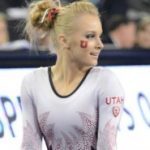 2008 National ChampParticipant
2008 National ChampParticipant50MM (million) not 50k (thousand). I’ve heard rumors that it was the WSU president, who was on the executive committee, who initially pushed the 50 mil and the others joined in. The article didn’t clear up for me who came up with the valuation, just that Randal was one of the 4 who pushed for it.
The best line I saw in that was for the UW president who at least recognized that the presidents were the most negligible. They were responsible for hiring Scott, extending his contract, letting him go but allowing him and his staff to “earn” their full contracts, not overseeing the commissioner’s office as he answered to them. And then after all of that, they hire a guy who’s only experience was selling Pay Per Views at a Vegas casino and decided to repeat all of the mistakes they made with Scott.
If it hadn’t happened to Utah, it would have been really funny to watch a bunch of ivory tower types fail on a colossal scale when faced with issues that couldn’t be solved in a lecture hall or faculty lounge. What’s the expression? “Those who can, do. For everyone else, the school district is hiring”
-
 The Miami UteParticipant
The Miami UteParticipantWhat I got from the article is that unnamed sources pointed the finger at Randall as being the guy who came up with the $50M valuation. Other unnamed sources then also say that he wasn’t the only person pushing the $50M demand. For me, it’s easy to just say #BlameKliavkoff.
-
 2008 National ChampParticipant
2008 National ChampParticipantBlaming Kliavkoff for not being capable of doing the job would be like blaming Jo.,, nope, not gonna open that can of worms again.
I operate in my work world on one thing: I am responsible for my subordinates work product. If they are incapable or unwilling to do the job(s) assigned them, that is on me. I’m the one who made the evaluation that they could do it in the first place. It would be a further failure of mine if I allowed that person to operate in such a manner that I could not get accurate updates on their progress.
That each school deemed it necessary to bring in their own consultants? Sheesh, tell me you have no idea what the hell was going on without specifically saying it.
-
-
-
-
-
 DataUteParticipant
DataUteParticipantThat’s how I felt too. But then this: Randall, I’m told, also wasn’t alone in pushing for the $50 million valuation. At least three others in the Pac-12 board room were also enthusiastic about it.
Everyone thought it was the ASU president and ASU professor. But sounds like there were several presidents all trying to get at a number. Interesting that the $50M was to try to anchor high to counter ESPN’s low anchor point in the negotiations. But they just walked away. Them and Fox had other motives.
-
 The Miami UteParticipant
The Miami UteParticipantYeah, well, you probably don’t have the ability to read the comments from fans of other PAC schools. They’re not quite as charitable, maybe in an unreasonable manner, towards Utah. Especially fans of PAC legacy schools like Wazzu and OSU who, in their minds, can’t believe that the conference was pushed towards implosion by the president of a “Johnny Come Lately.” Truly a mess in all aspects.
-
 EagleMountainUteParticipant
EagleMountainUteParticipantThe fans of OSU and WSU having that attitude illustrate why they are in the situation they are in.
-
 The Miami UteParticipant
The Miami UteParticipantAs is often the case Eagle, you’re not wrong.
-
-
-
stbone
ParticipantThis story about Randall is a nothing-burger and is the most recent in a long-line of people taking ludicrous positions while arm-chair quarterbacking.
The article states that the PAC12 schools had their valuations all between 40-45MM dollars. The article says these were from multiple consultants. Any negotiator would try to get very close to the estimated value in the final deal. Given that estimated value, and the initial offer from ESPN, the counter offer of 50MM was perfectly reasonable, and was likely the right move (it may have been a bit low).
The outcome (having the PAC12 blow up) sucks, but if the PAC12 had taken a media deal far below what they believed was market, the PAC12 would have blown up anyway, especially because fox would have just shown Oregon the money. This article is nothing more than self-flagellation and mourning in the form of a made-up expose. Canzano should probably just work on moving through the stages of grief faster.
-
 The Miami UteParticipant
The Miami UteParticipantTo be completely fair, Canzano had been tracking this issue and writing regular updates for over a year before the PAC broke up. In that vein, it’s only normal that he continue to write about a subject that remains important for a large segment of his reading public. And, at the end of the day, your value is what the market says you’re worth, no matter your expectations.
-
stbone
ParticipantMy issue isn’t that Canzano wrote the article, my issue is how he attempts to paint Randall in a poor light. It is only when you read the details that it becomes apparent that (1) Randall wasn’t working alone, and (2) Randall had the right strategy. The fact that he tries to make Randall look bad, even though the facts point to Randall having made the right decision in pushing to ask for 50MM and in asking to be in the negotiation room, makes the article the worst kind journalism.
Yes, ultimately value is based on what the market will bear. But that is a useless platitude in negotiation as you can only see what the market could bear after the fact, especially in a market with so few transactions. It sounds like schools were doing the right thing in hiring consultants to generate estimates of market value.
On top of the fact that it seems like the presidents were being reasonable, we shouldn’t lie to ourselves, taking a 30MM agreement wouldn’t have kept the conference together. To keep the conference together, they probably needed at least 50MM per team to put payouts close enough to the BIG10 to make the jump for UCLA, OU, and Wash not make sense. Although Canzano doesn’t write the story this way, his facts indicate that the conference was already dead, and it appears as if the presidents were, as a group, taking reasonable steps to try to resuscitate a zombie.
-
 The Miami UteParticipant
The Miami UteParticipantI appreciate your response and you make some valid points. However, based on the final outcome, you’re probably one of the few people that have such views. There’s a concept known as “reading a room.” Clearly that didn’t happen with Randall, Kliavkoff, and the rest of the PAC presidents. By presenting what was in reality an out of market proposal, they gave ESPN/Disney the opportunity to walk away from the table (which was probably what they really wanted to do) with little flak.
-
 2008 National ChampParticipant
2008 National ChampParticipantThere is one big thing missing whenever anyone brings up the 30MM offer from ESPN. Because of their agreement from the previous media deal they had an exclusive bidding window (I believe 30 days). So it’s easy to see how some might have felt that was a lower than market value offer, especially with the amount ESPN gave the SEC and what Fox was reportedly given the B1G.
Once that window expired, the 30MM offer was off the table. So it was either take what you felt was a lowball or shop around hoping you can do better. I feel like it’s become a binary choice between the 30MM & 50MM and that was never really the case.
-
-
-
-
-
-
-
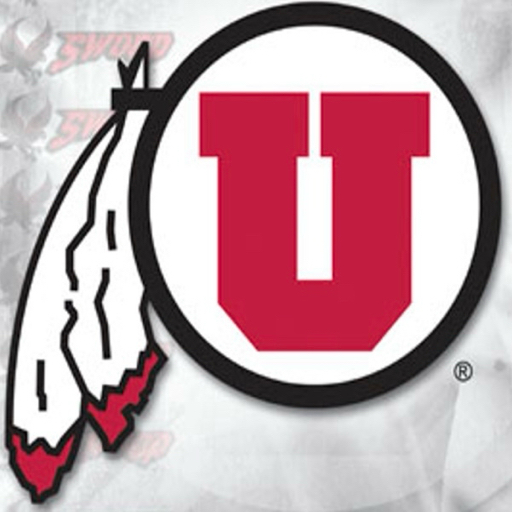 KellsoParticipant
KellsoParticipantIf there is any blame, USC is the culprit.
-
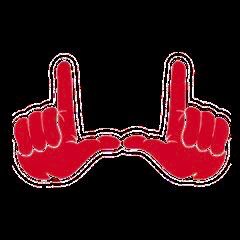 D TParticipant
D TParticipantBingo
-
 pedroParticipant
pedroParticipantWhile USC and UCLA loaded the cannon, Randall going in with bad data and leading the charge was a huge mistake. You don’t play around with that much money based on what ‘we were told’.
Randall and his AD are both ass clowns. I can’t for the life of me figure out a fanbase that bashes a top 5 coach yet willing accepts ineptitude at the Presidents and AD posistions.
-
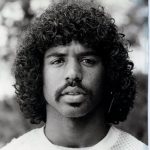 CharlieParticipant
CharlieParticipantGoodness. Randall completely intimidated the other presidents to the point more than half voted to support his suggestion rather than vote what they knew was best. Next, how many people at the time would vote to accept less money than the Big 12? Last, USC and UCLA running to the B1G at the first opportunity and Oregon and Washington begging daily to be included from that day forward must of had nothing to do with the PACC 12 struggles.
-
-
-
 cicampbeParticipant
cicampbeParticipantJohn Canzano? Might be true, but he’s more often wrong than right.
-
 picsParticipant
picsParticipantKliavkoff completely misplayed the negotiations. He hired one of his buddies with no experience in deals like this as his consultant. He kept the presidents away from negotiations even after Randall requested to participate. Instead of using $50m as a negotiating starting point, he presented it as take it or leave it. Kliavkoff is incompetent and the presidents have mismanaged the conference through the tenure of two commissioners. Randall was headed in the right direction but has to accept responsibility as one of the 12 presidents.
-
-
AuthorPosts
- You must be logged in to reply to this topic.
